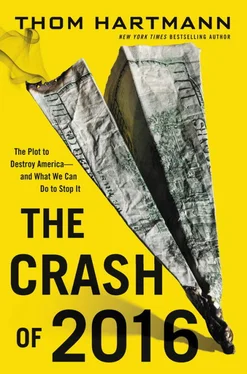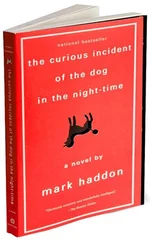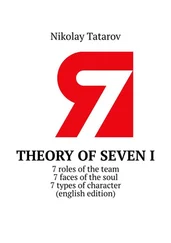In 1832, he vetoed a renewal of the charter of the Second Bank of the United States, defending the first fundamental in his veto message by writing, “It is to be regretted that the rich and powerful too often bend the acts of government to their selfish purposes,” 21but that he would put an end to that by taking on and humbling the bankers. He was the people’s hero for doing so.
The Next Cycle: The Civil War
The Founding generation, who in 1776 had pushed back against the Royalists supporting King George III, and the Economic Royalists of the East India Company, who largely controlled all economic life in America, were all long-dead fourscore years later.
That’s when Abraham Lincoln was a lawyer in private practice, working for the railroads. On August 12, 1857, he was paid $4,800 in a check, which he deposited and then converted to cash on August 31. That was fortunate for Lincoln, because just over a month later, in the Great Panic of October 1857, both the bank and the railroad were “forced to suspend payment.” 22
Of the sixty-six banks in Illinois, the Central Illinois Gazette (Champaign) reported that by the following April, twenty-seven of them had gone into liquidation. It was a depression so vast that the Chicago Democratic Press declared at its start, the week of September 30, 1857, “The financial pressure now prevailing in the country has no parallel in our business history.”
The crash highlighted the enormous economic struggle under way between the North’s and the South’s Economic Royalists.
As the Southern plantation/slave economy was turned on its head with the invention of the cotton gin and calls to end slavery, the Royalists were rising up once again. In the North, too, Economic Royalists were amassing power with booming textile factories and little in the way of protections for workers. Ultimately, in a battle for supremacy over the national economy, the Royalists in the North and South tore the union apart in a bloody Civil War.
Even though the scourge of slavery was defeated in the Civil War, the Royalists, who supported both sides, didn’t lose the fight. For the next forty years, they ran roughshod over the American economy, prompting Grover Cleveland, the only Democratic elected president during the era, to proclaim in his 1888 State of the Union Address, “The gulf between employers and the employed is constantly widening, and classes are rapidly forming, one comprising the very rich and powerful, while in another are found the toiling poor.”
He added, “As we view the achievements of aggregated capital, we discover the existence of trusts, combinations, and monopolies, while the citizen is struggling far in the rear or is trampled to death beneath an iron heel.
“Corporations, which should be the carefully restrained creatures of the law and the servants of the people, are fast becoming the people’s masters.” 23
But those who remembered the previous Great Crash and ensuing Civil War were either all dead or had, at least, passed out of power by 1920, when a nation exhausted by World War I elected Warren Harding president on a platform of “more business in government, less government in business,” putting an abrupt end to the Progressive Era that had seen two decades of trust-busting, union-organizing, and anticorruption measures such as the Tillman Act of 1907, which banned all corporate contributions to all political candidates.
In his book Only Yesterday: An Informal History of the 1920’s , published in 1931, American historian Frederick Lewis Allen described the scene in Washington, DC, in 1921 when the Economic Royalists flocked back to the nation’s capital now that they had an ally in the White House with Warren G. Harding.
“Blowsy gentlemen with cigars stuck in their cheeks and rolls of very useful hundred-dollar bills in their pockets began to infest the Washington hotels,” Allen wrote. “The word ran about that you could do business with the government now—if you only fixed things up with the right man.” 24
And Harding was the rightest of the right men. Harding’s secretary of treasury, Andrew Mellon, a wealthy industrialist and banker, promptly shepherded legislation through Congress that slashed taxes for the superwealthy in America from 73 percent down to 25 percent over the next few years, and the Harding administration followed through on its promise of “more business in government” 25by rolling back labor protections and financial-industry regulations.
After Harding died, two and a half years into his term, the Royalist agenda was advanced by the Coolidge administration, which coined the term “Coolidge Prosperity,” referring to the enormous wealth bubble caused by all the “hot” (low-taxed) money produced by Treasury Secretary Mellon’s tax cuts and deregulations.
That hot money inflated a real estate bubble that started down in Florida (but had spread nationwide) and popped when a hurricane wiped out Miami in 1926, pushing investors to move their money into the growing stock market bubble. That bubble popped in 1929, and Republican austerity-based responses triggered the Great Depression just as the third Republican president of the era, Herbert Hoover, was settling into the White House.
He later recounted Treasury Secretary Andrew Mellon’s advice during the crisis: “Liquidate labor, liquidate stocks, liquidate the farmers, liquidate real estate.” 26In other words, let everything go bankrupt.
Mellon’s friends knew what that meant. Once everything hit bottom, then those who understood the nature and causes of the crash—and why and how the Hoover administration had both prolonged it and let it bottom out—could walk into the devastation and buy up everything for cheap. The Royalists were not going to lose, and some of America’s greatest fortunes were made during the Great Depression using just this technique.
Within three years of the crash of 1929, almost one-in-four Americans was out of work, tens of thousands of military veterans, calling themselves the “Bonus Army,” were “occupying” the National Mall, and loud voices were variously calling for Fascism and Communism as a solution to our nation’s problems. It was a time of genuine crisis.
But FDR believed himself equal to the challenge. Being from the Economic Royalist class himself, he well knew that he had to save capitalism from itself, and in the process he could save the nation as well.
“The money changers have fled from their high seats in the temple of our civilization,” Roosevelt said in his First Inaugural Address. “We may now restore that temple to the ancient truths. The measure of the restoration lies in the extent to which we apply social values more noble than mere monetary profit.”
This crisis was also an opportunity for FDR.
FDR Wages War on the Royalists
In his famous “first hundred days,” fifteen major and dozens of minor pieces of legislation, all designed to restore the economic fundamentals necessary to put America back on track, made it through both houses of Congress and to his desk for signature.
They created the Federal Emergency Relief Administration, passing borrowed federal money out to the states to give both benefits and jobs to the unemployed. There was the Public Works Administration, which immediately set about building major projects such as power-generating plants, water and wastewater facilities, schools and hospitals.
People who’d seen their savings wiped out when their banks had gone bankrupt were reassured and brought back to using banks because of the Federal Deposit Insurance Corporation, which guaranteed that the little guy would never again lose his money.
Tens of thousands of young men were put to work immediately through the Civilian Conservation Corps, which threw together tent cities for workers across the nation and set about planting trees and reclaiming agriculture- and grazing-damaged land.
Читать дальше












